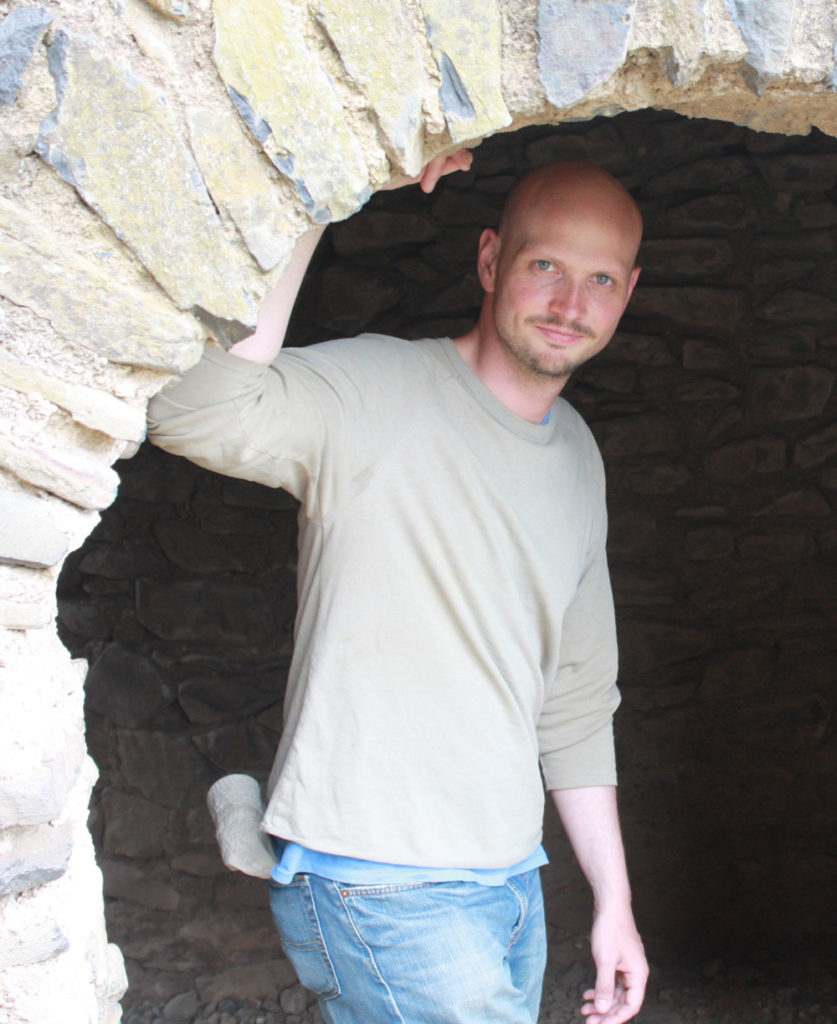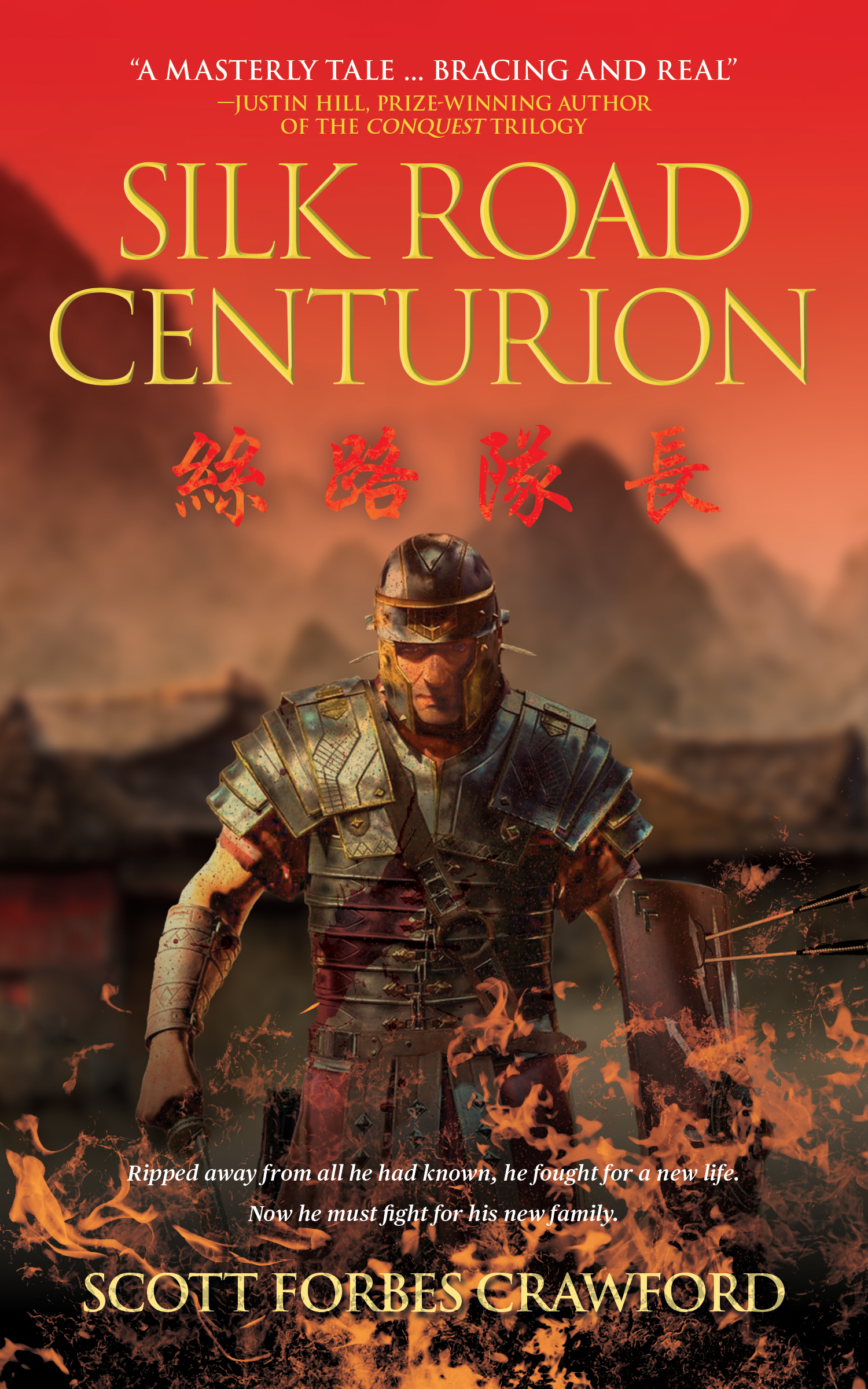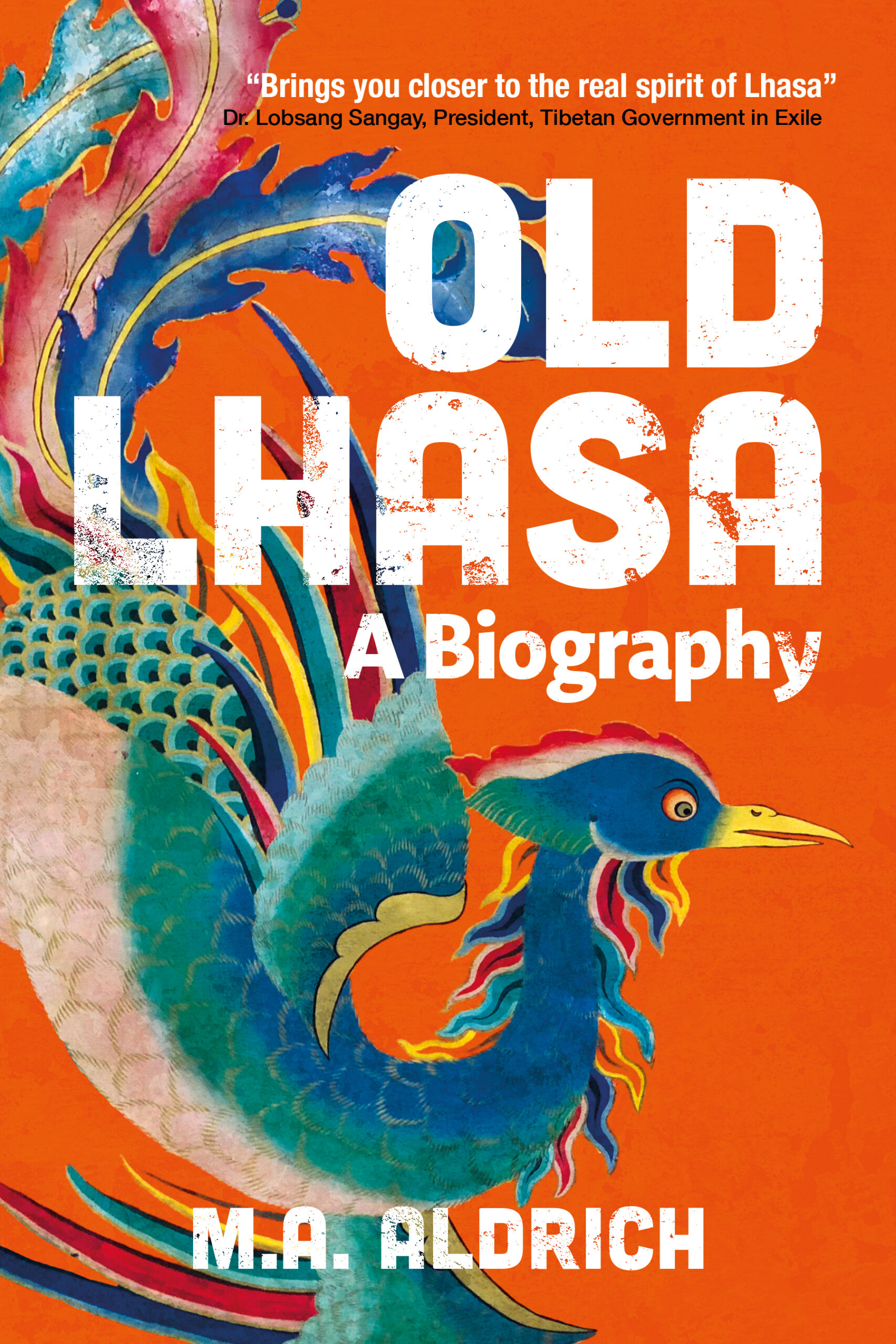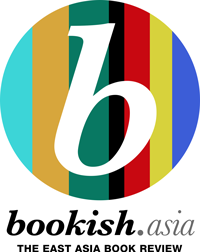John Ross chats with Scott F. Crawford, an American writer based in East Asia. They talk about Scott’s Silk Road Centurion, published by Camphor Press in 2023, a historical adventure set in the Chinese borderlands two millennia ago.
* * *

Scott, we first met, online at least, five years ago, when you wrote a review for Bookish Asia. The review was of A Hero Born, the first book of The Legends of the Condor Heroes, a seminal series of wuxia (martial hero) novels serialized in the 1950s, written by Jin Yong (Louis Cha) and translated by Anna Holmwood. Are you a fan of that genre?
I am a fan, probably most of all because wuxia is a distinctively Chinese form of storytelling that is at once accessible and distinct from so much Western narrative. Beyond the settings and swashbuckling elements, I enjoy the tonal whiplash found in the genre, flitting from slapstick to darker moments at the drop of a hat.
The timeline for that Jin Yong series kicks off about a thousand years ago, whereas Silk Road Centurion is set two thousand years ago, before the development of what we know as Chinese martial arts. Your novel doesn’t read like a wuxia novel – a matter of being historically correct or was it a style choice?
I believe both. While I do enjoy wuxia very much, it is not a strong influence on my writing, at least consciously. With my novel I meant to give readers a grittier, more character-grounded experience than wuxia trades in.
I remember the byline for your review and, of course, my eyes widened when I saw the words “is completing a novel of a Roman soldier’s adventures in Han-dynasty China” because that was of great interest to me. That was back in 2018, so five years ago. As is usually the case with books, it was a long journey.
Indeed, a journey to rival that of my protagonist Manius’s trek across Asia…. I set a formidable challenge for myself in that I chose a complex project as my first novel. I’d written short stories, historical articles, and feature film scripts before but never anything of the ambition of Silk Road Centurion. So I was learning on the job, as it were. And of course, even after finishing a manuscript, then comes the often-long hunt for a publisher; after that, the editing and production which takes a manuscript and makes a proper book of it. All of these phases happen at their own pace.
What inspired you to write a historical drama about a Roman centurion in western China?
First and foremost, my own experience in China. I had taken a year off from university in the US to enroll in a language-study program at a university in Beijing and after that went back and forth between China and the US until at last settling in Beijing with my wife in 2010 for 11 years. It was during that stint I began casting about for a story I might tell of contact between East and West, but in a more unusual and exciting way than basing this on my own bland life. When I heard of a massive battle in what is now Turkey and the theory that some Roman survivors strayed deeper into Asia in the wake of their defeat, I knew almost in an instant I’d found the germ of my story.
Why the frontier setting rather than having Manius in the heart of Chinese civilization, for example, in the Han dynasty capital of Chang’an (now known as Xi’an, Shaanxi Province)?
The novel takes place on the frontier for a number of reasons, though I don’t think many were conscious at the time I conceived the story. First, there’s a potential for elemental drama with a setting at the edge of civilization. And the hardscrabble farming village where much of the story occurs afforded me a chance to delve deeply into a handful of relationships, concentrating the dynamics among characters. My purpose also was to heap struggle upon struggle on my protagonist Manius. As a city-bred Roman, he needed to adapt not only to Chinese ways but also to the unfamiliar demands of an agricultural world, further dislocating him from his background.
Certainly I’d have enjoyed letting Manius loose in downtown Chang’an to see what trouble he could get into, but the main reason I couldn’t is because the book concerns not only China and Rome but also a third civilization, that of the Xiongnu nomads. It was on the frontier that Chinese and Xiongnu met and clashed, and so that would be the primary backdrop of my novel.

Were your experiences of living in and traveling around China of any help in writing Silk Road Centurion?
They were. As I mentioned, I wanted to tell a story of meeting cultures but not to simply fictionalize my experiences and call it a day. One can go overboard with this line of thinking, of course, but on some level, I was able to identify with Manius as he struggled to make himself understood and to decipher his new environment.
Through my travels in western China I gained a sense of the landscape which would become so much a part of my novel. Walking the dunes near Dunhuang or among the ruins of the trading station Tashkurgan in Xinjiang can bring a great deal of inspiration as well as a sense of a duty to capture it to the best of one’s ability.
Who were the Xiongnu?
They were a confederation of tribes and nations that organized themselves into a sophisticated, roaming civilization which vied with China to rule the lands at its margins. I became captivated by these long-lost people. As pastoralists they wandered in search of grass to feed their herds of sheep and horses. Their children were practically born to the saddle, riding sheep and later small horses about the same time they learned to walk. Xiongnu women enjoyed political and property rights their tightly controlled Chinese sisters could only fantasize about. Also scandalous to the Chinese, widows were expected to marry the brother of their dead husband rather than live out their days locked away in semi-shameful widowhood. We know these things, yet the ethnic and linguistic origins of the Xiongnu remain largely a mystery – they left little record of themselves behind but burial sites, metalwork and perhaps some stone monuments. These gaps in knowledge mean frustration for the historian but rousing opportunity for the fiction writer.
The Xiongnu are the antagonists in my novel though I still strove to portray them as members of a living, complex culture and not cardboard monsters.
Your novel starts in 53 BC. Did the Silk Road exist at that time? What was the state of the Roman Empire? China?
Pinning down the start of the Silk Road (a term coined in the 19th century by a German) is a tricky business. But it’s fair to say that in 53 BC it did exist in some form. Vibrant urban centers dotted Central Asia – Bactria (Afghanistan) was known as the “Land of 1000 Cities” – and trade networks linked them. Silk was but one of many commodities being traded: spices, medicines, and slaves also fetched sufficiently handsome prices to risk the hazards of long-distance travel. Undoubtedly a thriving exchange took place well before China became a player in this commerce, but circa 140 BC the Chinese explorer-diplomat Zhang Qian set out on a mission to the west, ostensibly to forge an alliance with another steppe people against the Xiongnu. Though he failed in his mission Zhang did bring China into contact with the urbanized world far beyond their borders. Now the wealthy and powerful Chinese empire added their commercial, diplomatic, and military might.
As to what was happening in Rome and China at the time of my novel, Rome was unknowingly in its final stretch as a true Republic. It was ruled by the First Triumvirate of Julius Caesar, Pompey Magnus and Marcus Licinius Crassus. But 53 BC saw Crassus march against the Parthian Empire and face the enemy at the disastrous Battle of Carrhae; when Crassus died there, the balance of power among the three men was upended and civil war between Pompey and Caesar quickly followed. Caesar’s victory and later assassination ushered in an age of autocracy.
And in China, the Han dynasty had been in power for a century and a half and was in a flourishing period. They’d been at war with the Xiongnu for decades, winning a number of key battles yet struggling to consolidate these victories. But a 60 BC succession struggle among the nomads erupted into years of civil war, ultimately leading to a partition of Southern and Northern Xiongnu, the Southern faction allying with the Han. The nomads who had harried China through much of the Han dynasty would never again know the strength of those earlier days.
What contacts and interactions did ancient China and Rome have?
Commerce did connect Rome and China, although much of the contact occurred via intermediaries – traders typically completed one leg of the Silk Road, sold their goods then journeyed back for home. And vested interests also kept the two great terminuses of the Silk Road in the dark about one another; the Parthians, situated between the two empires, had little to gain by allowing direct Chinese-Roman communication.
There are some tantalizing near misses. A Chinese delegation set out for “Da Qin” (their term for Rome) around AD 97 but made it no farther than the Persian Gulf, possibly after being dissuaded by Parthians from continuing onward. A Roman traveler named Maes Titianus (my protagonist Manius Titinius is a wink to him) seemed to have journeyed as far as Tashkurgan, what’s now the far western edge of China, though no records indicate he made it into the interior.
Okay, I’m asking this question for my twelve-year-old self. A Roman army comes up against a Chinese one – who wins?
Ah, the proverbial lion versus tiger fight (obviously, the tiger wins). It is an intriguing thought experiment. Both empires were battle-hardened, and both possessed an organizational capacity that proved vital in war. Though China’s experience with the Xiongnu might tip the scales. Over time, the Han regime became more and more adept at hiring and impressing nomadic horse archers to join their army. This was borne out of a “use barbarians to fight barbarians” strategy they’d long pursued but took decades to implement (and this strategy later proved a poisoned chalice to the Han dynasty). After painful losses to the Xiongnu in the early days of the Han-Xiongnu War, the Chinese adapted their tactics and doctrine, recognizing the importance of mounted bowmen, then developing their own and hiring others.
I suppose the closest analogue we can look to of a Roman-Chinese matchup is the Battle of Carrhae, strange as it might be for the Chinese to play the role of the at least semi-nomadic horse archers of the Parthians. At Carrhae the Romans were all but powerless as the Parthians circled and loosed volley after volley of arrows down on their heads. Likely the Chinese army, so heavily influenced by fighting a nomadic foe and adopting its ways, would have met the Romans in this fashion, and likely with a similar outcome as the Parthians had. So I give the Han army the trophy (or the mound of enemy heads).
How did you balance historical accuracy with creating a compelling storyline?
On the one hand, it is of course a difficult and important balance to strike. On the other, accuracy is something of an illusion when writing of events two millennia distant from us, whether framed as fiction or fact. Nonetheless, I did try to be sober in my approach, anchoring my fictional inventions to the knowledge we have of that time, even though much of it might be obscured.
In some ways, the frontier setting probably gave me more freedom – there’s so little known about the daily life of peasants that there was no clear record to violate in my pursuit of an arresting storyline.
I’ve not written any fiction myself but have sketched out a few scenes for a historical novel. My word, it’s bloody hard work trying to get the material culture correct. What I found particularly difficult was the weapons – the weapons the characters used, and the details of how they used them. Was this a challenge for you?
Undoubtedly this was a challenge. There’s no shortage of duels and battles in the novel so I did need to give the matter some thought. The truth is, no one knows with much certainty how a Roman legionary wielded his gladius short sword or how the Han infantryman handled his “dagger-axe” halberd. I suppose I tried to bring a certain economy to the way weapons were used and battles fought, with plenty of mishaps thrown in for realism. You certainly won’t find any traces of wuxia in these scenes.
There have been a few novels and movies exploring the interaction of the Roman Empire and China. What sets your book apart from these works?
To be honest I’ve not read or watched many so I cannot speak of them knowledgeably. And once I began working on the novel, I mostly avoided anything that might inadvertently color my work. I’d guess that what sets my book apart from others is the thoroughness of the research; this in turn guided my imagination when conjuring details the historical record sheds little light upon, such as the actual practice of Xiongnu, Roman, and Chinese religious rituals.
I also believe the introduction of the Xiongnu marks my book out from stories with ostensibly similar storylines and draws a contrast, I hope, from binary stories of East meeting West like Shogun. Adding the Xiongnu to the mix deepened the Roman-Chinese interaction while also bringing to life a fascinating culture barely portrayed in historical fiction.
What are some of the books you used for research?
I read as widely as I could on all manner of topics so there was quite a stack of both primary and secondary sources: Herodotus’s Histories, Plutarch’s Parallel Lives, The Complete Roman Army by Adrian Goldsworthy, Everyday Life in Imperial China by Michael Loewe. All served me well but I found the most useful gave some insight into the psychology of the era. Let me highlight one for each of the cultures I portrayed.
I went straight to the source for China: Records of the Grand Historian by Sima Qian. As a historian of the distant past and reporter of his own time, he laid the foundation of Chinese historiography. The immediacy of his writing – often through biographies – imparts his subjects with a psychological dimension I think rare among ancient authors.
Unfortunately the Xiongnu left us no text sources so they are largely captured by Sima Qian and other Chinese writers. I relied on the book Animal and Shaman: Ancient Religions of Central Asia by Julian Baldick. A slender but far-reaching volume, it helped me to gain a sense of the Xiongnu worldview and fold that into the characters’ perspectives.
For Rome I will select Daily Life in Ancient Rome by Florence Dupont. This study delved intricately into Roman thinking and social mores, and I found it indispensable when trying to come to grips with Manius’s inner world.
Can you give us some book recommendations – fiction and non-fiction – and don’t limit yourself to China-related works?
For fiction, I’ll focus on books which might appeal to those who enjoyed Silk Road Centurion. One writer I’ve long enjoyed and was surely a major influence on my novel is Harold Lamb. An American pulp author, he wrote “Oriental Adventure” stories but unlike many of his peers, deep research and on-the-ground experience, as well as serious writing chops, distinguished his work. His best-known character is a shrewd old Cossack who roams the steppe and locks horns with Chinese, Russians, and Tartars. There’s a splendid multi-volume collection of Lamb’s Cossack stories edited by Howard Andrew Jones (himself an excellent author of history-influenced fantasy novels).
One of my favorite books is a wise, witty, and exciting tale of a Viking adventuring across Spain and Bulgaria and elsewhere, all the while undergoing a halfhearted conversion to Christianity. The Long Ships by Frans G. Bengtsson is action packed yet also deeply comic. I have recommended it to multiple friends who went from never hearing of it to proclaiming it a favorite.
I am a great fan of Rosemary Sutcliff and though I discovered her historical fiction relatively late – after I’d written most drafts of Silk Road Centurion – she has become an important influence. Several of her books are set in Roman Britain and I will choose one of those: Mark of the Horse Lord. In it a young gladiator earns his “wooden sword” – his freedom – but no sooner does he start to enjoy it than he’s embroiled in a political conspiracy. Though the book is ostensibly written for young people, I thoroughly enjoyed it and found parts quite intense and gritty.
For a nonfiction recommendation, I will disclose that the author is a friend but as I got to know him through his writing in the first place, I should hope that won’t matter. M.A. Aldrich has written a number of books concerning Beijing, Islam in China, and Mongolia, but his latest, Old Lhasa: A Biography, sent me on a journey like never before. Though I’ve traveled widely in China and Asia, to my regret I never did make it to Tibet. Old Lhasa all but corrects that shortcoming. His book immerses the reader in Lhasa through the ages and as you turn the pages, you feel like a learned raconteur is walking at your side, pointing out the significance of colors in a temple or cracking a joke about an old Tibetan bawdy song.

Silk Road Centurion screams “make me into a movie.” The novel has a very cinematic feel and the dialogue is screenplay friendly. You have a background in writing scripts and screenplays, right?
I hope movie producers hear those screams, too!
Many readers of the book have commented on its cinematic qualities and potential. Writing is quite a visual process for me, as I envision scenes with some detail and then must find a way to capture these “films” on the page. That is likely no accident, as for a number of years I pursued and occasionally achieved a career in screenwriting. I did this while living in Beijing, which meant atop the intrinsic vagaries of bringing any sort of script to the screen, political considerations weighed heavily. I was the co-writer of what was to be a Hollywood-China co-production, an action thriller with the actor Donnie Yen set to star and a major producer from LA involved. It was marching along at a fine clip – I was even sent to Prague to scout filming locations – but at the eleventh hour it all crumbled.
This and other frustrating experiences with the movie business prompted me to turn away from that world and rededicate myself to the less glamorous but more personally rewarding writing of prose. I’m glad I made the change.
What are you working on now?
This will be a busy year. Silk Road Centurion is the first of three books expected. My fascination with the setting of the novel led me to engage on a different level by writing a history book about the period. The Han-Xiongnu War, 133 BC – AD 89: The Struggle of China and a Steppe Empire Told Through Its Key Figures, will be published in October by Pen & Sword Books. In it I build a mosaic describing the course of the long conflict by writing biographies of fifteen historical personages, from emperors to “peace brides,” the Chinese women sent to nomadic groups as surety of alliances or as payments for good behavior. A few tasks remain for the book but it’s essentially complete now.
The next book is quite a departure from the Han dynasty. My wife Alexis Kossiakoff and I have risked marital strife by writing together. Our first collaborative book is a historical fantasy novel for middle-grade readers, The Phoenix and the Firebird. It is inspired by Alexis’s family history: During the last throes of the Russian Empire, her great-grandfather was an army officer serving the tsar. Sensing their time in Russia would soon be at an end, he arranged for his wife, young son, and other family members to escape to China where they spent seven years in various cities before managing to emigrate to the USA. We loosely drew from this and added a fusion of Chinese and Slavic mythology to spin a fantastical quest. It is expected late this year from the publisher Earnshaw Books.
I’m also now completing a historical adventure for adults. Set in the last stages of the Southern Song dynasty as the Mongols seek to dominate the whole of China, it follows a young man and woman charged with a long and perilous journey to bring an irreplaceable item to safety, all the while hounded by Mongol warriors. You might call it a hybrid of a historical thriller and a coming-of-age story. I think it is fair to say the pleasure I took in writing Silk Road Centurion drove me to this time to explore a different corner of Chinese history through a hard-hitting and immersive adventure.
* * *
Silk Road Centurion is published by Camphor Press and is also available from various retailers such as Amazon.com.
To learn more about Scott and his work, visit his website: Scott Forbes Crawford
